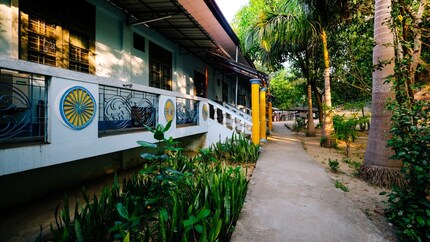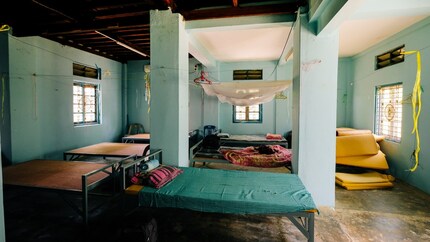
Background information
Black-and-white pictures – fab, not drab!
by Denny Phan

I spent 10 days in Burma, during which I did nothing but meditate. Below I tell you what I learned, and how this experience was reflected in my photographs.
I'd been dreaming of visiting Burma (also known as Myanmar) for a long time. Its people are adorable and curious, and this country steeped in history offers some of the most beautiful landscapes in South-East Asia.
Before immortalising these famous spaces and the people who inhabit them, I put my camera away for ten days and embarked on a new project that would prove to be my biggest challenge yet: a vipassana meditation retreat during which I would learn an enormous amount about myself and my photography business.
You're probably wondering what links meditation and photography. Well... they have more in common than you might think. Sitting on some uncomfortable meditation cushions, I've been thinking a bit about photography and noticed that some of the basic principles and lessons of meditation can also be applied to it.
I'd like to explain these similarities and bring a new perspective to your images. I also explain at the end of my article what it's like to train your buttocks and mind in a meditation centre for ten days.
It can quickly feel like you have no time to devote to photography, especially when you're working. It makes me think of one of the proverbs linked to meditation:
Meditate for 20 minutes every day. If you're swamped and don't have the time, meditate for an hour.
I'd just like to encourage you to take the time to photograph, as it can relax you just as much as meditation. Before my round-the-world trip, I often took photos on my way to work so I wouldn't lose my grip. I advise you to get into the habit of always carrying your camera with you. You won't have any more excuses!
Ask any photographer the recipe for success, and they'll no doubt tell you that good discipline is essential.
During my meditations, I mainly tried to discipline my mind. The first itches are quickly felt, then pains appear in the joints, before spreading throughout the body. It's all about staying in control and not moving an eyelash.
The brain becomes exhausted, lacks distractions and would much rather imagine a succulent dish, but being disciplined also means firmly redirecting your mind towards meditation.
Discipline is one of the highest commandments of meditation. Photographers, even amateur ones, should take a lesson from this. After all, it's what transforms quick snapshots into images that transcend their subject.
We weren't allowed to communicate with each other for those ten days. No whispers, no signs, no eye contact, ABSOLUTELY NOTHING! The tall student behind me kicked me twice in the back, but only opened his mouth at the end of the retreat: "Hey, my name is Roy. By the way, I'm sorry for kicking you in the back... like twice..." ("Hi, I'm Roy. Sorry for kicking you in the back... like twice..."
When a photographer asks friends or family to tell him what they think of his photographs, he often gets the impression that they too have taken a vow of silence. While compliments usually fly, and most of the time sincerely, constructive criticism is rarely received.
I'll make you the following suggestion: choose two friends, one with some knowledge of photography, the other none at all. Tell your two critics that you would really like to improve and that you will ask them from time to time to give you honest feedback.
The connoisseur will use the following criteria: what are the positive elements? What could be improved? Are the images creative? What about the technical aspects?
You will only ask your other friend for their first impression. Show them your photos and ask them to freely express what comes to mind. In my opinion, this will give you a good idea of the effect your images are having.
I'd known about the positive effects of meditation for a few years, and wanted to give it a go. While a few YouTube videos and other books had provided me with theoretical knowledge and a good understanding of the subject, I needed an interactive component. I needed to share my many questions.
It was only at the end of those ten days of teaching and practice that my learning curve increased markedly.
Until then, I had acquired much of my photographic knowledge from books and explanatory videos. With the internet, anyone can learn on their own, but I think the greatest progress is inevitably made through contact with a master.
During my trip, I had the opportunity to chat to a few beginner photographers and pass on my knowledge of ISO, aperture and shutter speed if they wanted it. Most of them understood within a few minutes, whereas it took me much longer to learn on my own.
It is therefore better to take part in a photography course from time to time and exchange ideas between enthusiasts.
It's difficult for me to describe the emotional turmoil I experienced during these ten days, but I'll attempt the exercise anyway, following a chronological order.
Oh my God... only 9 DAYS to go!!!! (I say to myself, laughing hysterically...)
"I'm a photographer, get me out of here!"Unfortunately, no one cares. And nothing forbids me from leaving the meditation room if I wish.
The long hours of sitting are taking their toll. Tiger Balm has become my best friend. It doesn't come off even when I wash my hands, and let me tell you, it's best to remember that detail when you're on the loo... At least running under the cold shower to soothe my irritations has helped keep me awake.
Purely hypothetical question: "Would you let a family of noisy birds nest right next to your meditation room?" No? That's what it sounded like to me. Obviously, the Burmese don't share our opinion. I had never felt the emotions of a bird so strongly before!
Small change of programme. We can now spend time in a 1.5 m2 cell and pay attention not only to our breathing, but also to all our sensations.
My worst day. My emotions went from one extreme to the other. At least sitting through the incessant squawking of my favourite family of birds is no longer a problem for me.
Day nine is the last day of complete meditation. My thoughts are much clearer, my aches and pains have disappeared and I have mastered my mad desire to leave the meditation room screaming.
After an early morning session and breakfast, the ban on talking is lifted, and we begin lively exchanges. It's a particularly interesting moment. I had already formed an impression of my fellow students based solely on their body language and clothes.
You can probably imagine now how intense and frustrating this retreat has been at times. But I'm very glad I did it. My thoughts have rarely been as clear as they were after those ten days, not to mention the joy with which I found my camera, armed with new knowledge.
I hope you enjoyed this unusual way of approaching photography. Have you ever done meditation? Or have other areas helped you to be a better photographer? Feel free to share them in the comments.
And don't forget:
Photograph at least 20 minutes a day. If you're swamped and don't have time to spare, do it for an hour 😀
Find out more about me here www.35waves.com/
A camera in one hand, an airline ticket in the other. That's what I call a perfect situation.
Find out more about me and my photography on <a href="https://www.instagram.com/35waves/" target="_blank">Instagram</a> or on my <a href="https://www.35waves.com/" target="_blank">website</a>
From the latest iPhone to the return of 80s fashion. The editorial team will help you make sense of it all.
Show all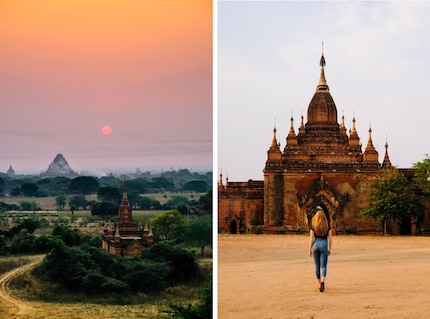
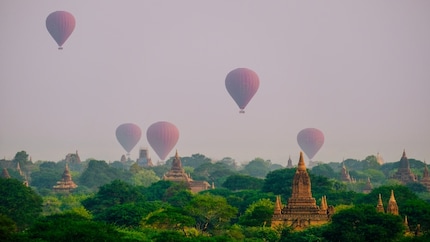
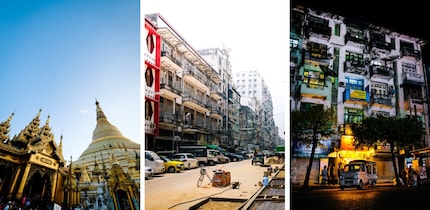
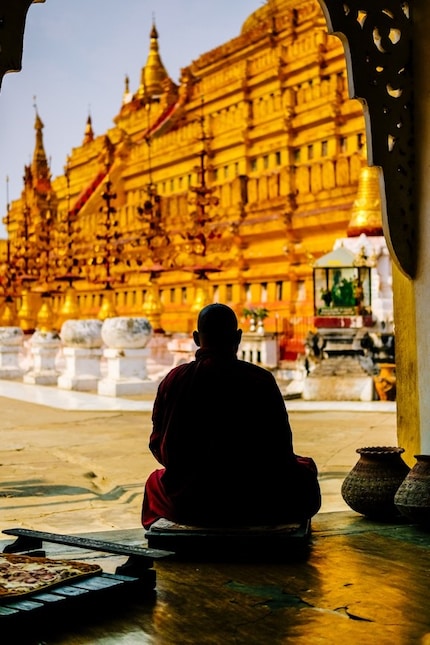
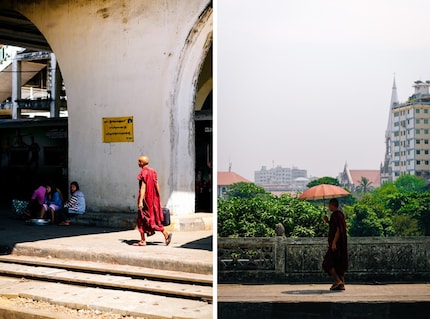
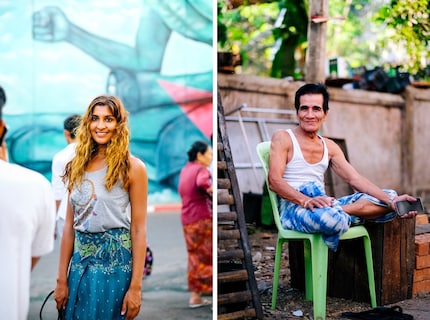
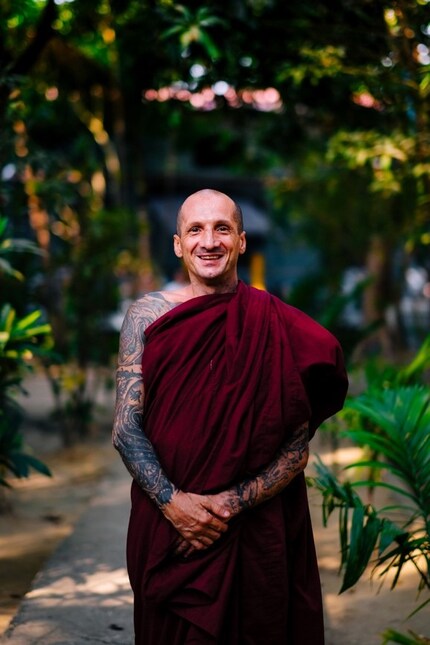
It's 4am sharp. A gong, at first distant then suddenly very close, rings out. I struggle to bend my rucksack-scarred back and get up, but the prospect of my first day gets me moving. I make my way to my assigned seat and try to calm my mind to enter into meditation. It's all about concentrating on your breathing. But my thoughts turn to my neighbours. In front of me is an old Burmese man who is certainly more used to sitting cross-legged for long hours than I am. My Vietnamese origins are unfortunately not much help. To my left is another Burmese. This one looks to be my age and is already fast asleep. On my right, a Westerner whose posture is exemplary... Show-off, you!
Ouh la... This is harder than I thought it would be. We're still concentrating on our breathing. It's scarcely believable: within seconds of closing my eyes, I start to recall embarrassing memories from my childhood. Ambient noise is also a source of distraction. A participant's belching, sneezing or wall-shaking snoring... Nothing is spared. But the meditation room has a good ventilation and air-conditioning system, or so I thought before a power cut occurred after ten minutes and left us meditating for 5 hours in sweltering heat.
